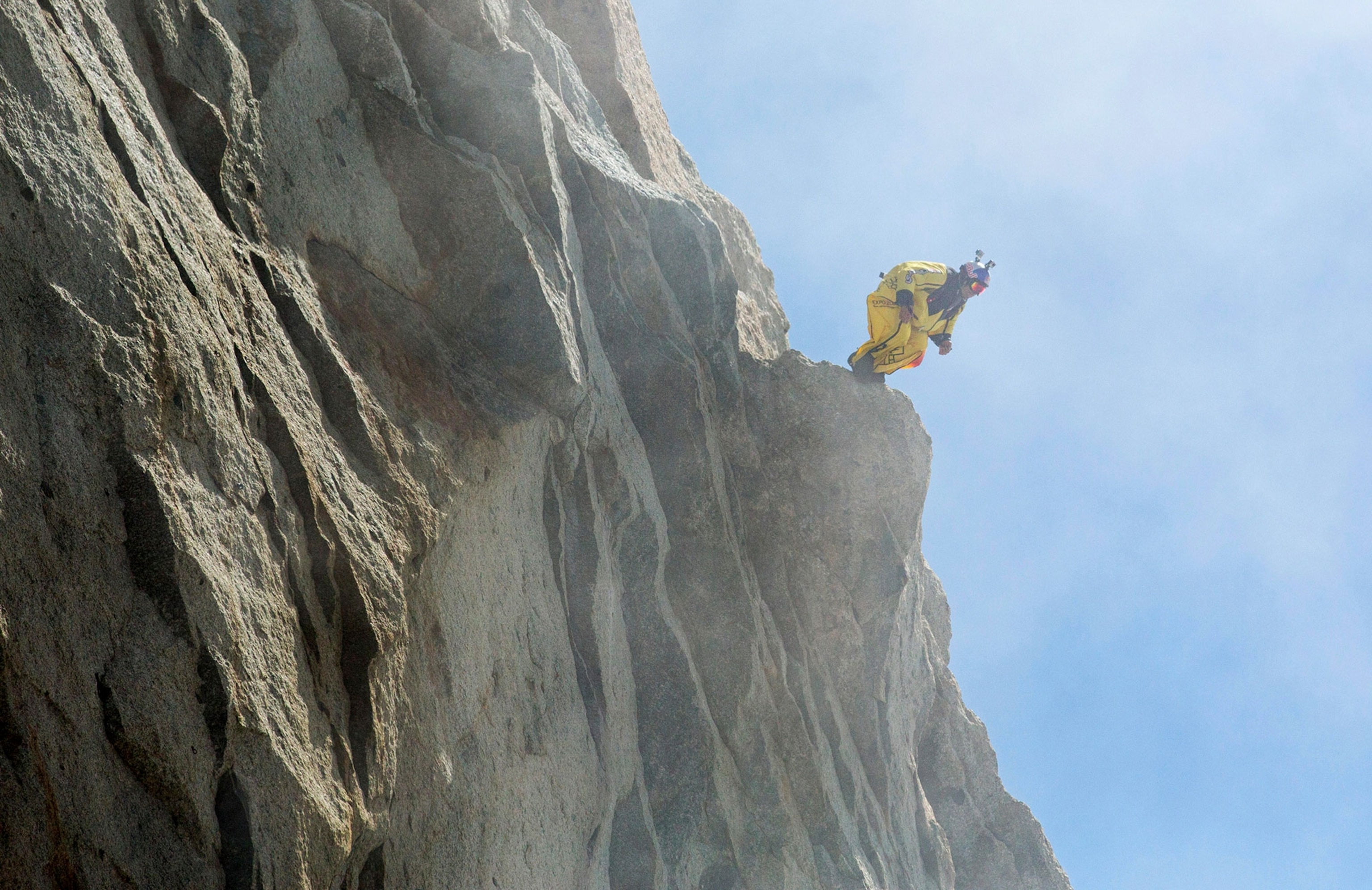
Chamonix Bans Wingsuit BASE Jumping After Latest Fatality
Can increased regulation help prevent more BASE-jumping deaths? The French Alps town plans to find out.
Alarmed by the news that a wingsuit BASE jumper crashed into the side of a chalet in Chamonix, France, city officials have responded by placing a six-month ban on the sport in the area.
In an interview with France TV, Jean-Louis Verdier, deputy mayor of Chamonix, expressed fears that the deceased BASE jumper could have easily injured others.
Chamonix mayor Eric Fournier told France TV that the ban will be temporary while officials work with the wingsuit BASE community to set regulations that may protect the public from another such incident.
"We can work more on takeoff and landing sites, trajectories and flight plans, and other regulatory measures,” Fournier said.
On Monday, October 3, Ratmir Nigimyanov, a 32-year-old Russian BASE jumper, launched his wingsuit from the Aiguille du Midi, a craggy spire that towers above town at an elevation of 12,605 feet.
During his flight, something went wrong. Witnesses reported seeing his body hurtling through the air at a tremendous speed. The careering figure clipped a rocky cliff just above town, then crashed into the side of a three-story chalet that was, fortunately, under construction and therefore uninhabited. The building was located just beside the Montenvers train station, one of the most popular locations in town.
Nigimyanov’s death is the 35th BASE jumping fatality of 2016, making for the sport’s deadliest year. His is also the fifth wingsuit fatality in Chamonix alone, following on the heels of Alexander Poli’s death in August. Poli was a star in the wingsuit BASE world, considered one of the sport’s most experienced and talented flyers.
Nigimyanov was also a professional, and the winner of many international competitions, according to Kristina Kuritsyna, an executive director of a Russian parachuting federation.
"His death is nothing but a tragic accident caused by an unopened parachute," she told the Russian newspaper TASS. "Our federation highly evaluated his experience and achievements."
BASE is an acronym standing for the types of objects participants may leap from: buildings, antennas, bridges—aka, “spans”—and the Earth itself, in the form of cliffs or promontories. Wingsuit BASE jumping takes the act of BASE jumping to an entirely different level as the addition of a wingsuit allows the “pilot” to carve and glide through the air over great distances and with incredible control and accuracy, not to mention at speeds well over 100 miles per hour.
Though there are no official organizations keeping track of participation, anecdotal evidence suggests that wingsuit BASE jumping has been growing in popularity since its inception around 2000.
- National Geographic Expeditions
Though many BASE jumpers bristle at the idea of more regulation in their wild sport, at least some, perhaps sick and tired of the growing death toll, are beginning to welcome it.
“When a wingsuit pilot crashes among civilians, I think this response [to ban the sport] is justified,” says Norwegian professional wingsuit BASE jumper Espen Fadnes, referring to Chamonix’s decision. Fadnes has experience as a skydiver dating back to 2000, and he has been a wingsuiter since 2001. He turned pro in 2012.
“It is proven in many other arenas of society that rules and regulations can prevent dangerous or reckless behavior,” Fadnes explains. “BASE jumping and wingsuit flying are at an interesting crossroads right now. Many jumpers believe rules and regulations must be implemented, while others are against that idea. We might see Chamonix become a test ground for how the community can deal with being regulated.”
He continued, “This could be the beginning of the end of the pure freedom in BASE jumping.”





